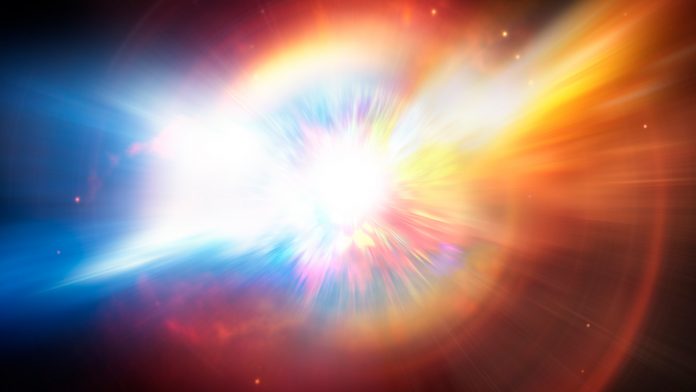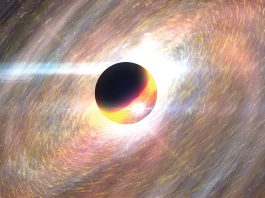A team of researchers, led by astrophysicists at Arizona State University (ASU), has determined that nova explosions are responsible for most of the lithium in our galaxy and solar system.
The team has continued to determine that a fraction of classical stellar explosions, named novae explosions, will evolve until they explode as supernovae. These exploding stars become brighter than a galaxy and can be discovered at very large distances in the universe.
“Given the importance of lithium to common uses like heat-resistant glass and ceramics, lithium batteries and lithium-ion batteries, and mood altering chemicals; it is nice to know where this element comes from. Improving our understanding of the sources of the elements out of which our bodies and the solar system are made is important,” says Sumner Starrfield, a regent professor with ASU’s School of Earth and Space Exploration and a Fellow of the American Astronomical Society.
What are classical novae?
The formation of the universe, commonly referred to as the ‘Big Bang’, primarily formed the elements hydrogen, helium, and a little lithium. All other chemical elements, including lithium, are formed in stars.
Classical novae are a class of stars consisting of a white dwarf and a larger star in close orbit around the white dwarf. Gas falls from the larger star onto the white dwarf and when enough gas has accumulated on the white dwarf, an explosion, or nova, occurs. There are about 50 explosions per year in our galaxy and the brightest ones in the night sky are observed by astronomers world-wide.
The author used multiple methods to determine the amount of lithium produced by a nova explosion. They combined computer predictions of how lithium is created by the explosion, how the gas is ejected and what its total chemical composition should be, along with telescope observations of the ejected gas, to measure the composition.
What can we learn from simulating nova explosions?
Starrfield conducted computer simulations of these explosions, with co-authors Charles E Woodward of the University of Minnesota and Mark Wagner of the Large Binocular Telescope Observatory in Tucson and Ohio State. The team obtained data to conduct their study on nova explosions using ground-based telescopes, orbiting telescopes, and the Boeing 747 NASA observatory called SOFIA.
With contributions from Christian Iliadis of the University of North Carolina at Chapel Hill and W Raphael Hix of the University of Tennessee, Knoxville, the team have provided insight into the nuclear reactions within stars.
Starrfield said, “our ability to model where stars get their energy depends on understanding nuclear fusion where light nuclei are fused to heavier nuclei and release energy. We needed to know under what stellar conditions we can expect the nuclei to interact and what the products of their interaction are.
“This is ongoing research in both theory and observations. While we continue to work on theories, we’re looking forward to when we can use NASA’s James Webb Space Telescope and the Nancy Grace Roman Telescope to observe novae and learn more about the origins of our universe.”









